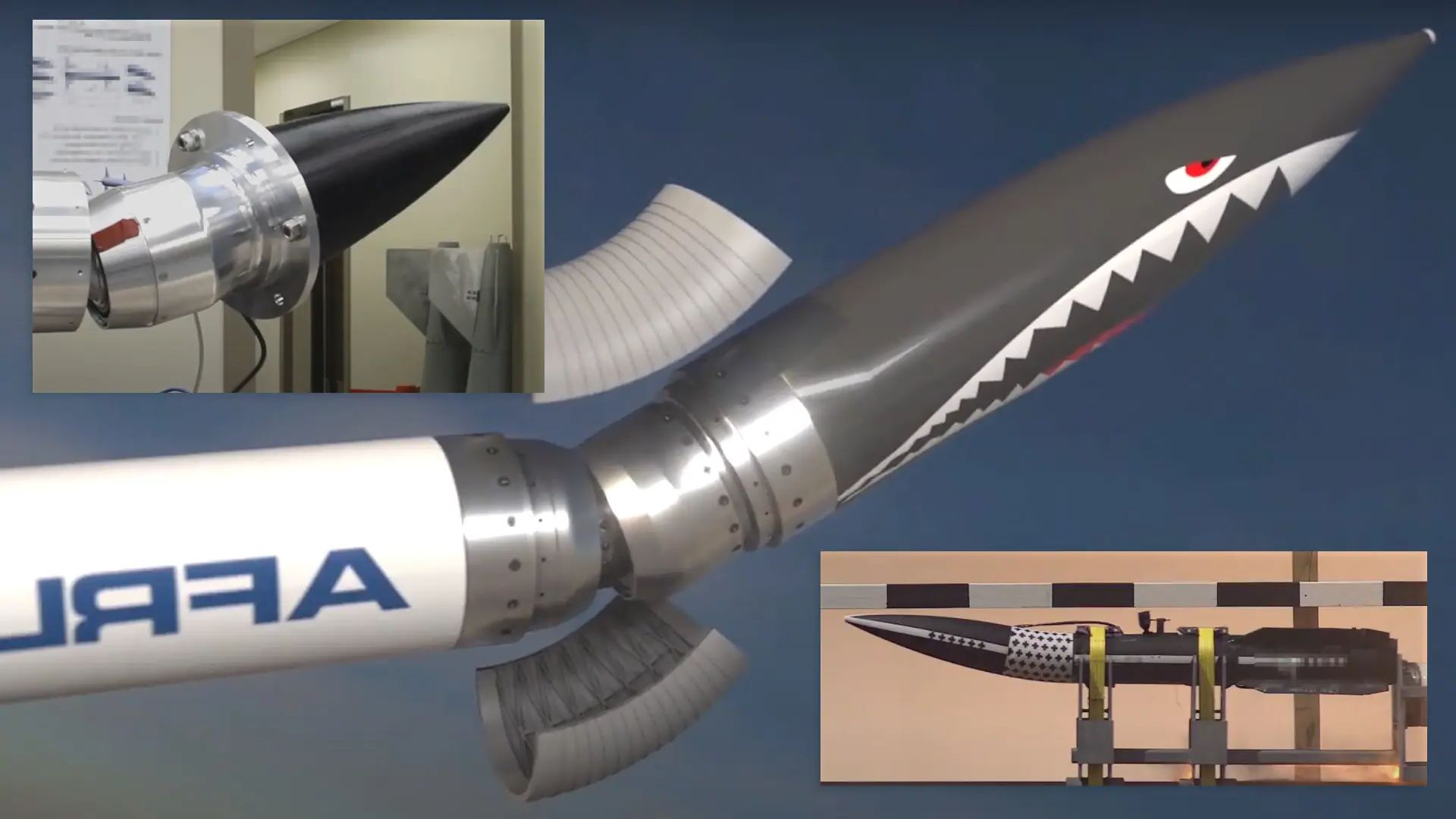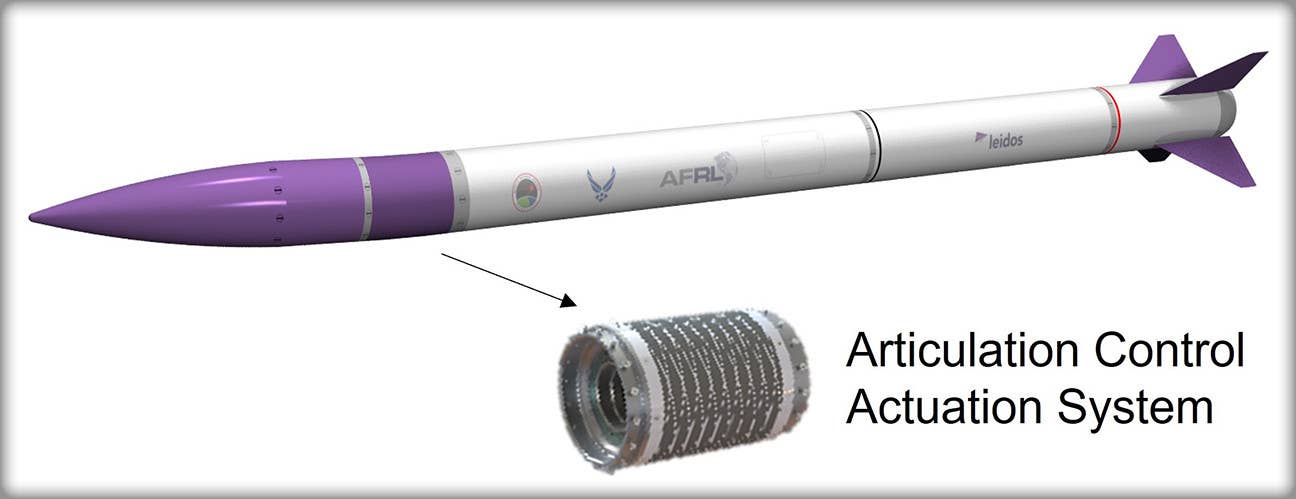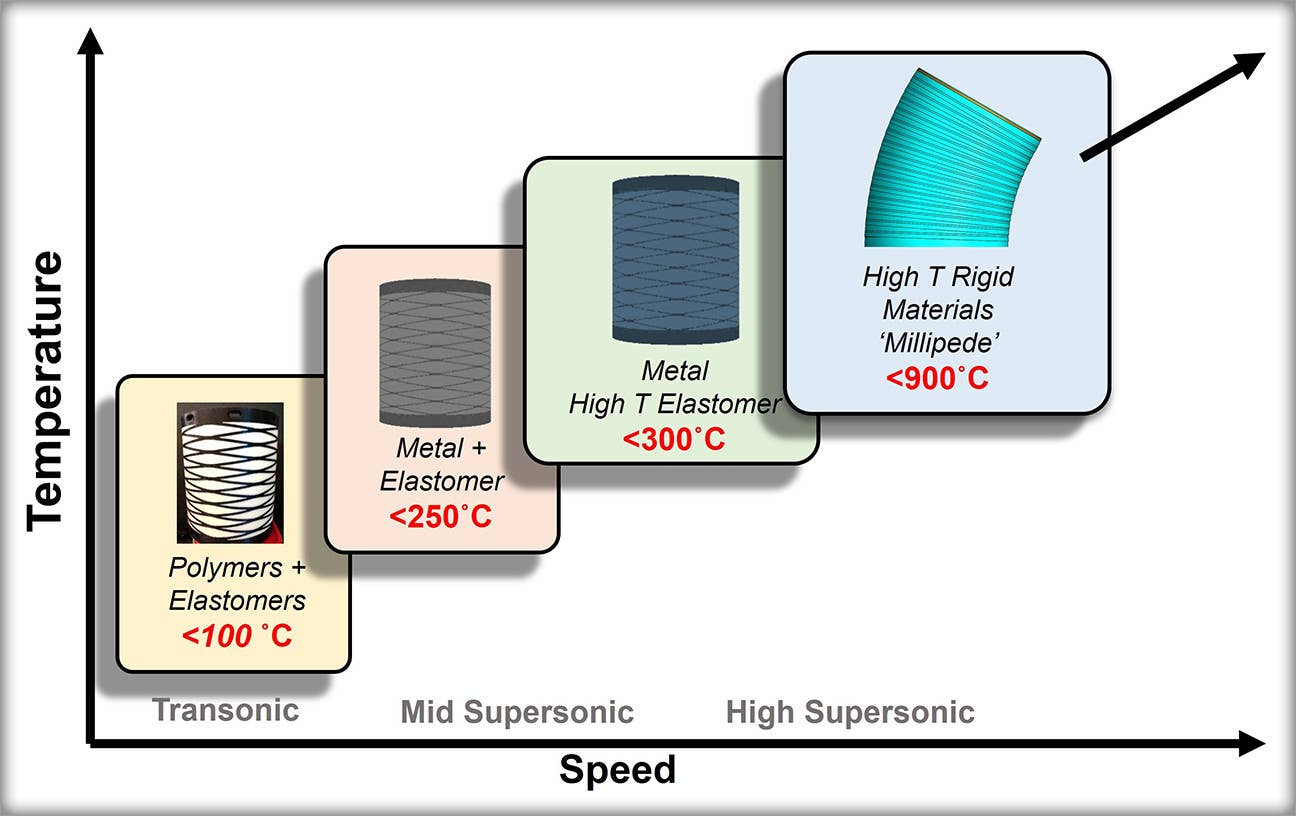The US Air Force is reportedly testing ‘MUTANT’ Missiles capable of twisting in flight to hit highly-maneuverable targets accurately, increasing the chance of landing a hit in air-to-air combat.
During the 2023 Air and Space Forces Association’s Warfare Symposium in Aurora, Colorado, the Air Force Research Laboratory showcased the Missile Utility Transformation via Articulated Nose Technology (MUTANT) project.
According to AFRL, the core concept of MUTANT benefits from relevant research and testing that dates back to the 1950s while also using the efforts made over the past six years on related technologies.
The concept involves utilizing an air-to-air missile with a nose that bends to reach the target quickly and prevent it from escaping.
The US Air Force considers using MUTANT missile technology as a potential solution to equip current and future combat aircraft with advanced capabilities to tackle increasingly agile threats. This includes the sixth-generation stealth jet developed in the Next Generation Air Dominance program.
The AFRL’s webpage noted that a missile with greater range, maneuverability (g-capability), and agility (airframe responsiveness) with limited weight is typically more effective. The missile’s control actuation systems (CAS) play a crucial role in all three of these metrics, ultimately impacting the missile’s ability to close in on targets successfully.
The overall performance of a missile is significantly impacted by each control actuation system (CAS) or CAS combination, like the dual canards and fins.
CASs good for range (fins only) are usually bad for maneuverability and agility. On the other hand, due to drag or additional weight, CASs good for maneuverability and agility (canards, wings, jets, thrust vectoring) often seem inadequate for range.
The MUTANT aims to change the conventional understanding of control actuation systems’ impact on missile performance. Unlike traditional missile designs, the conceptual designs of the MUTANT only feature tail fins as control surfaces. This approach reduces the missile’s drag, making it more efficient and increasing its range.
Typically, tail-fin-only missile designs sacrifice maneuvering and agility for greater range. The MUTANT missile, however, overcomes this limitation by incorporating a conformal section at the front of the missile body that allows the entire front end to articulate away from the center axis.
This additional feature allows the missile to maintain its extended range while enhancing its maneuverability and agility, which are crucial in air-to-air combat situations.
The EurAsian Times talked to Kitsch Liao, Assistant Director for Atlantic Council’s Global China Hub, to learn more about the ‘MUTANT’ missile.
Liao said, “My current understanding is that the rotating mechanism offers a way for the missile to redirect its explosive fragmentation warhead (or continuous rod, I suppose that’s also possible) toward a different vector during the terminal phase, so effectively widens the possible engagement envelope.”
He pointed out, “The AFRL claim is that they are essentially making it possible for the missile to engage a more maneuverable target without needing to have the traditional control surfaces to direct the missile to fly close enough to the target – they’ve widened that effective “sphere” around the target where if the missile could reach and activate the warhead damages can be done to the target.”
“So because the need for control surfaces is less, and the required G-load for the missile is potentially less, the missile can be built lighter and with less drag when compared to the same missile without rotating forward section and wanting to achieve the same engagement envelope. Alternatively, with the same structural strength and control surfaces, the missile would have a wider engagement envelope,” Liao added.
“These, however, do not consider the trade-off for the rotating section, from structural strength requirements(so potentially negate some of the savings), to the weight and bulk of the rotating mechanism itself (again potentially negating some of the weight savings),” he explained.
Liao stated that thus it is still unclear whether this will ultimately prove to be enough of an upgrade for the Air Force or other branch services to decide to adopt it.

Difference Between MUTANT And Conventional Air-To-Air Missile
While using a conventional air-to-air missile, the entire weapon must alter its course if the target drifts away from the predicted intercept point. With MUTANT, the “course adjustment” can be accomplished effectively by moving the front of the missile to align it with the actual threat location.
The nose section that can move and adjust its position could enhance the precision of the air-to-air missile’s warhead, which is typically small, by concentrating its impact on the intended target. It could also aid in ensuring that the missile seeker, or seekers plural in the case of multi-mode designs, maintains a lock.
Missiles that use multi-mode seekers, particularly those that merge imaging infrared and active radar technologies, are often equipped with intricate arrangements that could affect the sensors’ range of vision in specific combat situations.
AFRL acknowledges that in the past, the size, weight, and power demands of morphing technology have made it impractical for use in missile systems but states that the MUTANT program is currently tilting the balance in favor of incorporating morphing features into weapons.

According to the official MUTANT website, AFRL created an electronically-controlled actuation system of small electromagnetic motors, bearings, gears, and structures to make this work in a missile-sized form.
Meticulous planning enables the creation of a circular pathway for component wiring to pass through into the body of the aircraft.
AFRL mentioned that the articulating component of MUTANT bears a resemblance, in very general terms, to the articulating exhaust nozzle found on the F-35B, Joint Strike Fighter’s short takeoff and vertical landing variant.
The potential technological obstacles also encompass the field of material science. For the articulating structure to be helpful in air-to-air missiles, it must be durable enough to withstand the high temperatures and other stresses that arise during high-speed flight.

Additionally, the missile’s entire frontal section must be capable of enduring the effects of rapid changes in flight direction.
AFRL has been developing a composite frame with an internal metallic skeleton filled with an elastomer in response to these requirements.
Liao said, “I see less application for the other claimed benefit of being able to aim your seeker in a different direction since this won’t change the fact that your seeker’s field of view is still the same, and if it sought to “rotate” to keep the target within the field of view while potentially having the rest of the missile continue to travel in the original vector to optimize interception, then we would also be contending with the sudden increase in drag and the associated performance penalties, but that’s getting quite into the weeds – suffice to say the benefit is far from definitive and require a lot more data and testing to see if the gain outweighs the cost.”
Liao highlighted, “From what we know right now, it seemed to be an evolutionary and potentially marginal improvement to existing air-to-air. What this reminds me of is the sudden trend to start equipping combat and experimental jets with vector thrust technologies in the 90s until they realized the gain was not worth the increase in weight and complexity and could be further mitigated through aerodynamic refinements; I very much suspect this might be one of those projects that is a solution seeking a problem that doesn’t exist.”
Meanwhile, the MUTANT website read that the final design of this structure is anticipated to be appropriate for use on missiles moving at high supersonic speeds, where parts may be subjected to temperatures above 900 degrees Celsius (1,652 degrees Fahrenheit).
The system’s various components have already been put through several ground tests by AFRL in lab settings and with rocket sleds. The prototype is built around a heavily modified AGM-114 Hellfire air-to-ground missile.
Another round of ground testing, according to AFRL, is scheduled to be completed by the end of the 2024 fiscal year and will result in the Hellfire-based prototype being able to navigate with dual articulation and fin control.
- Contact the author at ashishmichel(at)gmail.com
- Follow EurAsian Times on Google News




